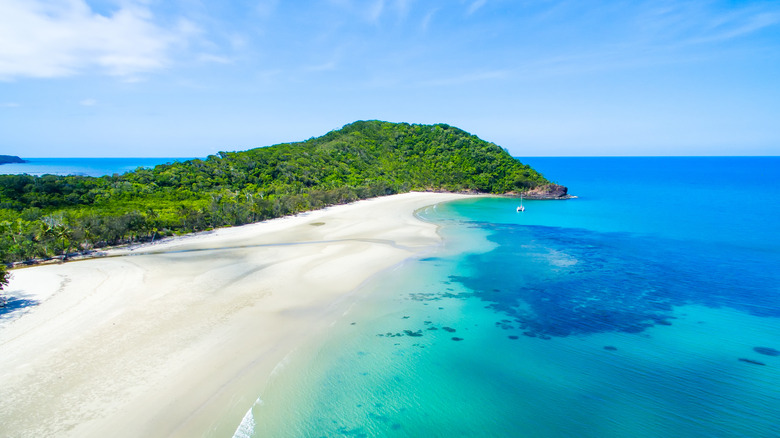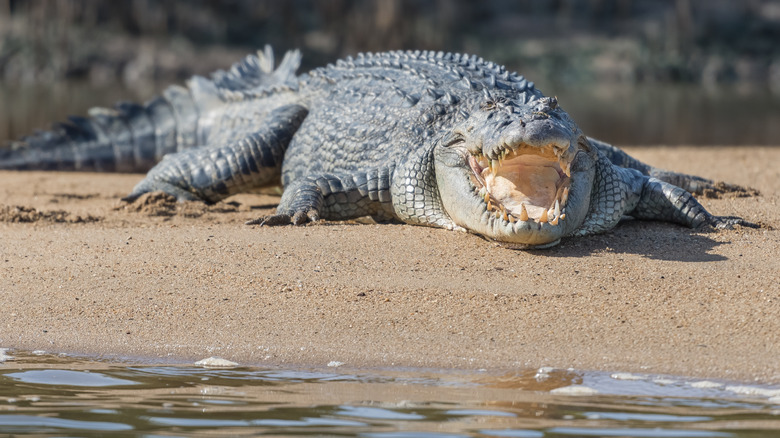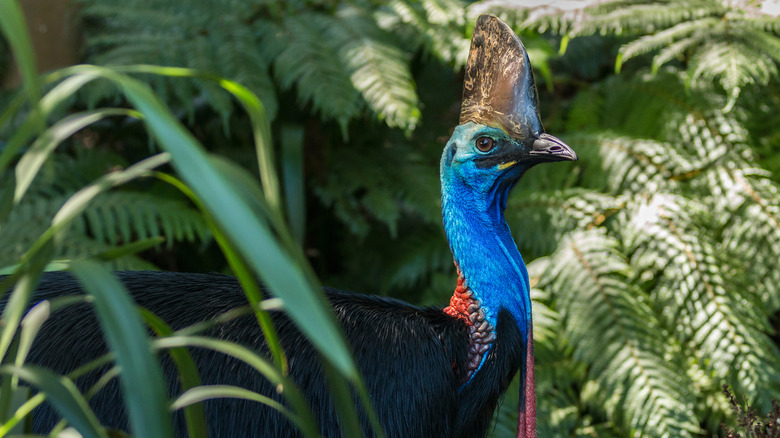Be Cautious When Visiting This Stunning Yet Dangerous Australian Beach
The good news about the world's most dangerous places is that their names are often a giveaway: Just take Furnace Creek, Death Valley, which is the hottest place on Earth, the "Gate to Hell" in Turkmenistan, also known as an endless fire, or Snake Island in Brazil with venomous vipers for instance. While Cape Tribulation in Australia doesn't quite fall into this top tier of scary-sounding places, its name should give you a heads-up that caution is required.
This stunning sequence of four spectacular beaches is at the end of the road, where the regular highway gives over to dirt tracks, only suitable for 4WD vehicles. It is a region of astonishing natural beauty and diversity, marking where the ancient Daintree Rainforest and the Great Barrier Reef (both UNESCO World Heritage-listed areas) run into each other. It has been attracting adventurous visitors for decades and is a brilliant destination for hiking, horse riding, and bush tours. The sweeping golden sands also provide easy access to the protected coral reefs offshore.
The Cape received its daunting name in 1770 when Lieutenant James Cook's ship collided with the reef and only just about made it to port a week later. Cook named it Cape Tribulation because "here began all our troubles," and there is still plenty for visitors to be wary of today. The fusion of forest and ocean is home to a variety of dangerous wildlife. That said, here's what to look for when exploring one of Australia's top coastal getaways.
Watch out for wildlife
Situated in northeast Queensland, Cape Tribulation is around a three-and-a-half-hour drive from Cairns. The further north you go, the more remote it gets, and this largely unspoiled natural habitat provides a home for a wide range of wildlife. The showstopper (and most potentially dangerous) are the Saltwater Crocodiles, or "Salties," as Australians call them. This part of Oz is Croc Country, and the toothy predators can be lurking not only in swamps and rivers but also in sandy estuaries of the Cape and even the open sea. These magnificent beasts can grow up to almost 20 feet long and a skirmish with one can prove fatal.
As you may expect, the Daintree Rainforest is home to many species of snakes. While most are harmless, some require a wide berth such as the Coastal Taipan, considered one of Australia's deadliest. The forest is also home to a more unusual threat: Cassowaries. The huge flightless birds can grow over six feet tall and can get aggressive if they feel threatened. They can cause injury with their long claws and have been known to chase or attack unwary visitors.
Swimming in the ocean off Cape Tribulation has its hazards, too. Sharks are known to patrol the waters and a man was killed by one in 2014. Also be aware of box jellyfish and Irukandji, tiny jellies that are hard to spot due to their size but can deliver a potentially fatal sting.
Staying safe in Cape Tribulation and Daintree Forest
The vast majority of visits to Cape Tribulation and the Daintree Rainforest pass without incident, but it's worth knowing what to do if face-to-face with the region's dangerous wildlife.
If you see a Saltwater Crocodile, you shouldn't feed or interfere with it in any way. However, they can present more of an unseen threat; crocs are ambush predators and wait for unwary prey to pass by. You should pay attention to warning signs and keep at least 16 feet away from the water's edge. The same goes for pets, which can look like a tempting snack to a crocodile. Swimming is only recommended in safe places such as Emmagen Creek. Keep in mind, even paddling around in a small craft like a kayak can be dangerous. And when on a boat, don't go dangling limbs in the water.
If you encounter a snake, back away slowly, and if faced with an angry Cassowary bird, one tactic is to stand firm and raise your arms to make yourself look bigger. As for potential ocean-bound hazards like sharks and jellyfish, the only surefire prevention is to stay out of the water. That said, millions of people visit the Great Barrier Reef each year and enjoy diving and swimming without any problems. While there was one confirmed shark attack off Queensland in 2023, it's also worth remembering that statistically, you're more likely to die in a horse-related incident in Australia.


